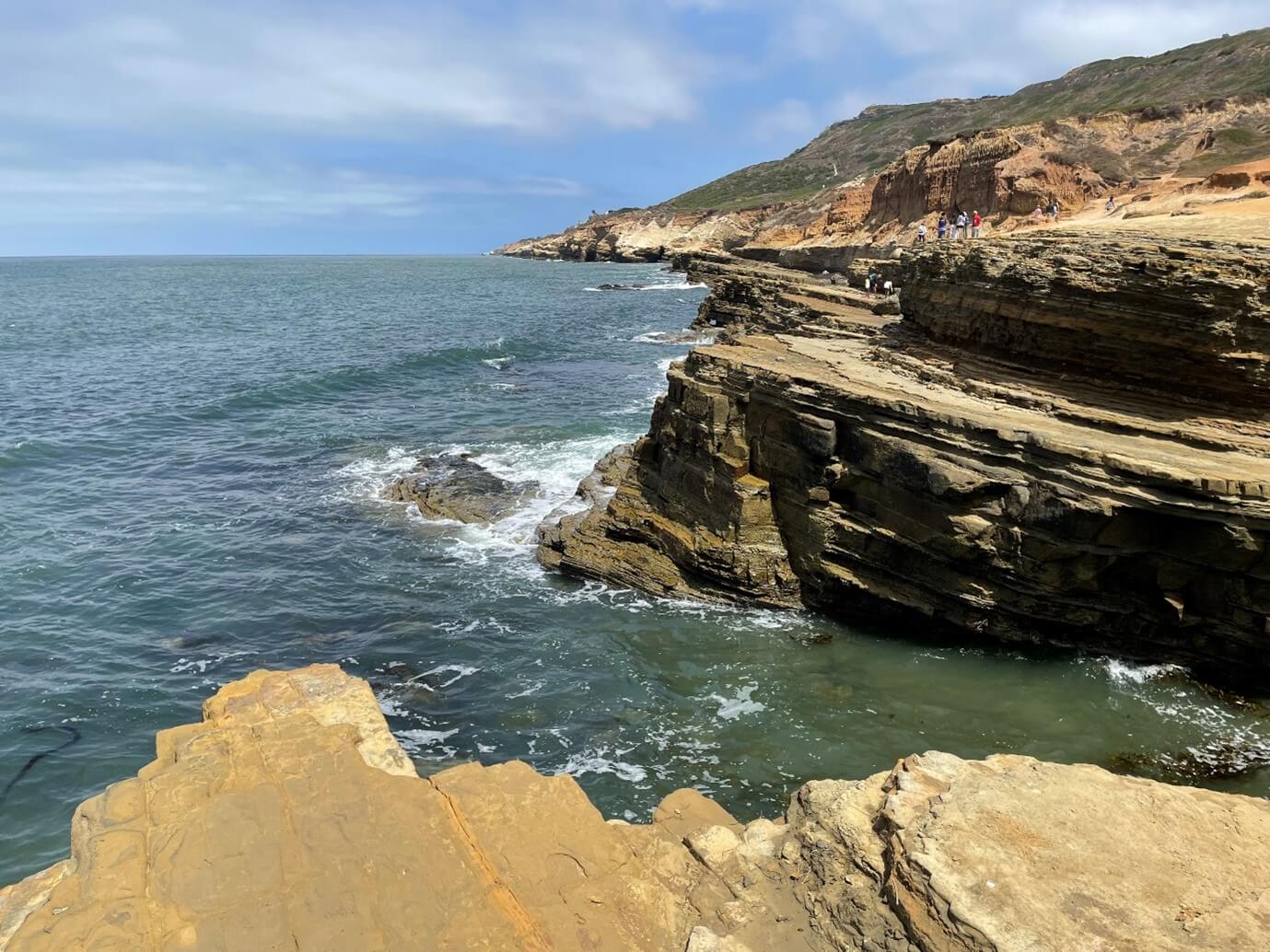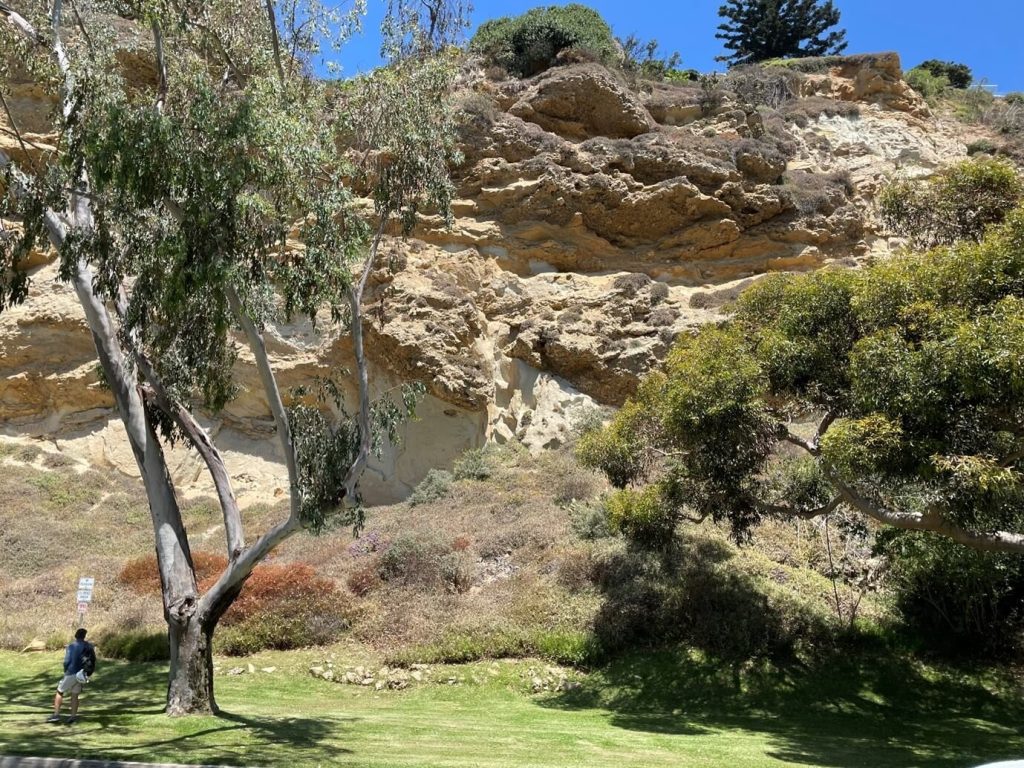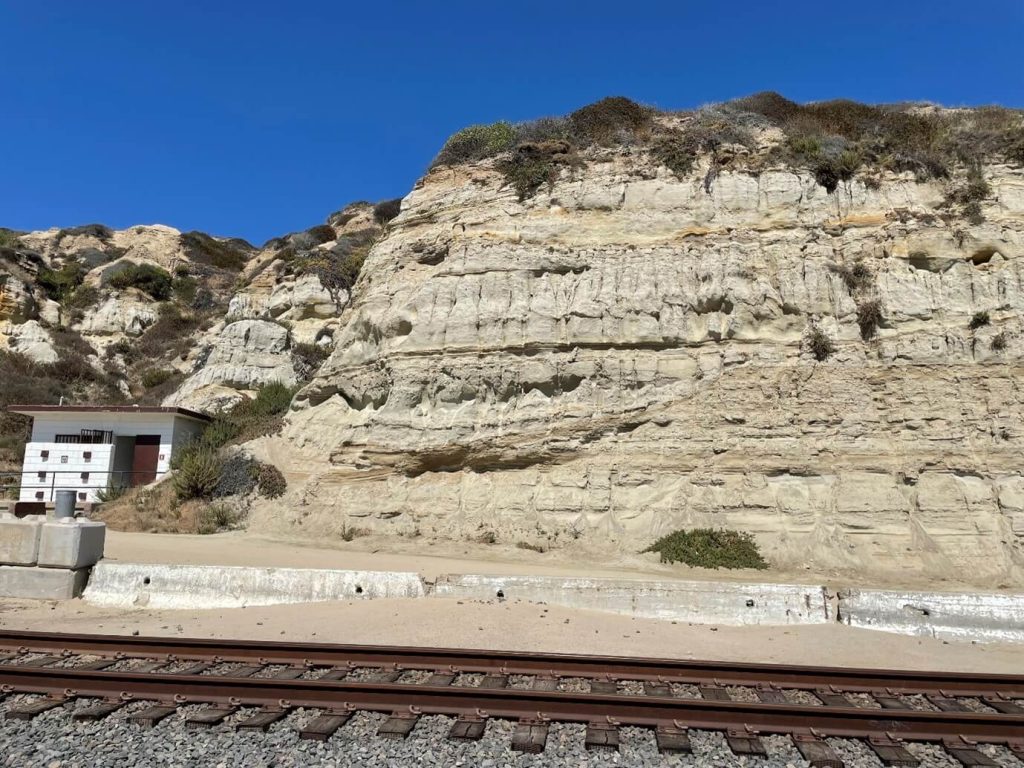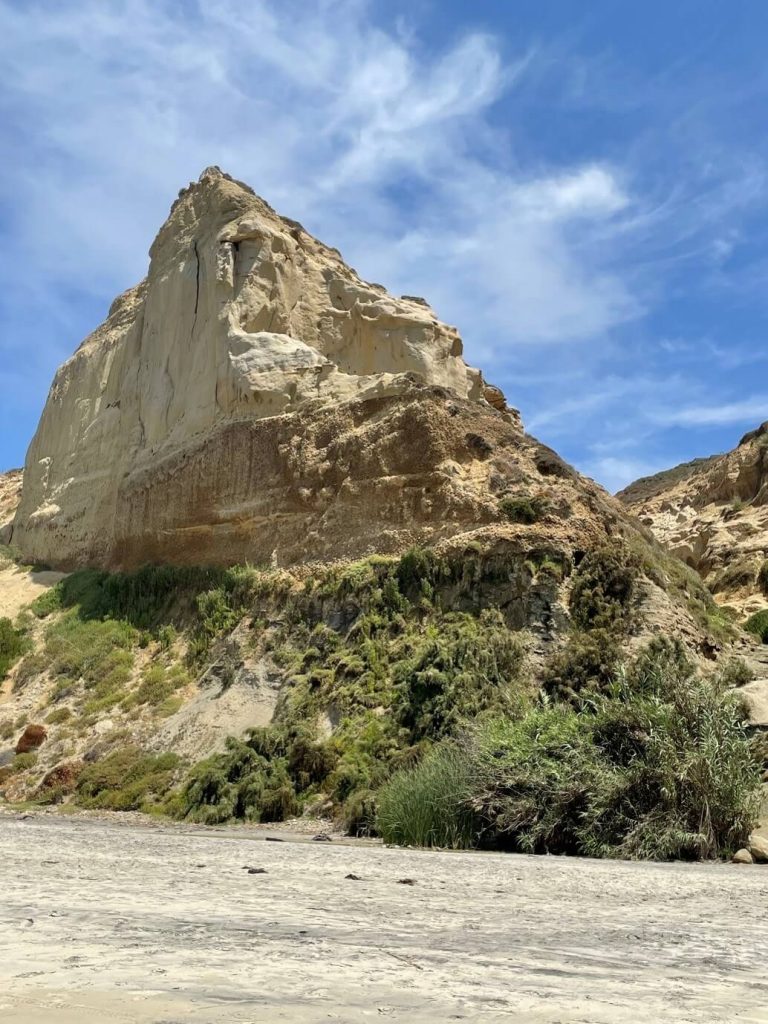
Field work remains at the heart of GeoLogica training, typified by a recent course to the coastal outcrops north of San Diego, California, with one of our client companies. The outcrops were explored with direct application to Guyana deepwater reservoirs, with a focus on reservoir modelling.
The central theme of the course was reservoir model design, on the premise that it is design rather than software knowledge that typically distinguishes ‘good models’ from ‘bad models’. The coastal field localities were used as an analogue reference and were viewed from source to sink, with a focus on specific deepwater architectural elements, including canyons, slope channels, channel margins and lobes.
Considerable time is often dedicated to reservoir model and simulation exercises but the results often disappoint: the time taken to build models is often too long, the models are too detailed and cumbersome, and the final model often not fit-for-purpose. The field course explored the reasons why and the remedies to fix these problems. Lecture sessions concentrated on model purpose, fluid-sensitive selection of reservoir elements, use and abuse of geostatistics, handling of scale and multi-scale, and uncertainty – the joy of the ensemble.
Many thanks to Mark Bentley for his energy, enthusiasm and time. No software running on this course, just sunshine, stunning coastal deepwater outcrops, opinions and space for discussion. In Mark’s concluding words, ‘Data ≠ Model ≠ Truth, and good design just needs clear vision.’



